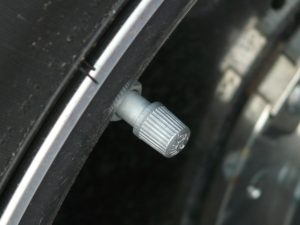Maintaining proper tire pressure is essential for safety and performance, which is why vehicles like the 2021 Mercedes GLS are equipped with a sophisticated Tire Pressure Monitoring System (TPMS). This system utilizes tire pressure sensors to accurately detect and compare your vehicle’s tire pressures and temperatures. If any substantial loss or excessive heat occurs in your tires, you will be alerted through display messages or warning lamps in the instrument cluster via a tire pressure light. To ensure accuracy after changing tires or adjusting tire pressures, it is important to restart the monitoring system manually by following specific steps. In this article we will cover how this particular TPMS functions, when to perform a reset, as well as warnings and tips that you should know about when driving a 2021 Mercedes GLS.
how to check tire pressure
 A tire pressure check is an important part of vehicle maintenance. To check the tire pressure manually, firstly, read the tire pressure recommended for the current operating conditions from the Tire and Loading Information placard or the tire pressure table. Secondly, observe any notes on tire pressure that are provided. Thirdly, remove the valve cap of the tire to be checked and press a tire pressure gauge securely onto the valve. Fourthly, read the tire pressure, and if it is lower than recommended then increase it to that value, releasing air by pressing down on the metal pin in the valve with a pen tip if necessary. Finally, screw back on the valve cap of that particular tire. Checking your tires’ air pressures on a regular basis is beneficial as it helps to maintain optimal fuel efficiency and reduces wear-and-tear on tires. In addition, properly inflated tires help to ensure a vehicle’s handling performance is up to par. Therefore, taking only a few minutes out of your day to manually inspect your car’s tires can be an easy yet effective way to keep you safe while driving and extend your vehicle’s life span. As well as keeping that pesky TPMS light off!
A tire pressure check is an important part of vehicle maintenance. To check the tire pressure manually, firstly, read the tire pressure recommended for the current operating conditions from the Tire and Loading Information placard or the tire pressure table. Secondly, observe any notes on tire pressure that are provided. Thirdly, remove the valve cap of the tire to be checked and press a tire pressure gauge securely onto the valve. Fourthly, read the tire pressure, and if it is lower than recommended then increase it to that value, releasing air by pressing down on the metal pin in the valve with a pen tip if necessary. Finally, screw back on the valve cap of that particular tire. Checking your tires’ air pressures on a regular basis is beneficial as it helps to maintain optimal fuel efficiency and reduces wear-and-tear on tires. In addition, properly inflated tires help to ensure a vehicle’s handling performance is up to par. Therefore, taking only a few minutes out of your day to manually inspect your car’s tires can be an easy yet effective way to keep you safe while driving and extend your vehicle’s life span. As well as keeping that pesky TPMS light off!
how to reset tire pressure monitoring system (tpms)
STEP 1: FILL TIRES TO RECOMMENDED PSI.
STEP 2: TURN IGNITION TO ON.
STEP 3: USE ARROWS ON LEFT SIDE OF STEERING WHEEL, SCROLL OVER TO SERVICE.
STEP 4: SCROLL DOWN, SELECT TIRE PRESSURE.
STEP 5: AFTER SELECTING TIRE PRESSURE, SELECT THE DOWN ARROW ON STEERING WHEEL.STEP 6: “USE CURRENT PRESSURES AS NEW REFERENCE VALUES” WILL APPEAR, SELECT OK ON STEERING WHEEL.
TIRE PRESSURE MONITOR IS NOW RESTARTED. After TPMS restart, all existing warning messages are deleted and the warning messages will go out. The TPMS (tire pressure monitoring system) will now use the most recent tire pressure values as reference values.
how mercedes tpms warning functions
Your vehicle is equipped with a sophisticated tire pressure monitoring system (TPMS) as an utmost safety feature. When the low tire pressure telltale illuminates, you must stop and check your tires to ensure they are properly inflated. Driving on significantly under-inflated tires causes them to overheat which can lead to potential failure and reduce fuel efficiency, tread life, handling capabilities and stopping power of the vehicle – it should not be substituted for general maintenance practices!
Utilizing a tire pressure sensor, the system can accurately determine and compare your vehicle’s tire pressures and temperatures. In cases of substantial loss or excessive heat, tire pressure warnings are presented either through display messages or warning lamps in the instrument cluster. To ensure accuracy after changing tires or adjusting tire pressures,, you may choose to restart the monitoring system manually for an updated reference value assessment.
when to perform tpms reset
 1. After adjusting tire pressure. (best tire pressure gauge on Amazon)
1. After adjusting tire pressure. (best tire pressure gauge on Amazon)
2. After tire replacement. (best cordless impact wrenches for removing tires)
3. After tire rotation. (if the tires are rotated and not reset, the tire pressures may be displayed on the vehicle’s display in the wrong locations)
4. After the load of the vehicle has been changed. Any significant increase in weight will require the driver to check tire psi, then perform TPMS reset.
tpms warnings and tips to keep in mind
Maintain proper tire tread depth to ensure safe driving conditions, especially in
wet  weather. (to learn more about tire tread depth read this) Don’t forget to rotate the wheels – on vehicles with same-size front and rear tires, this should be done at least every 3,000-6,000 miles (5k-10K km), depending on wear; make sure that rotating direction is maintained for optimal performance! Remember to reset TPMS after!
weather. (to learn more about tire tread depth read this) Don’t forget to rotate the wheels – on vehicles with same-size front and rear tires, this should be done at least every 3,000-6,000 miles (5k-10K km), depending on wear; make sure that rotating direction is maintained for optimal performance! Remember to reset TPMS after!
conclusion
Maintaining proper tire pressure is essential for safety and performance, which is why vehicles like the 2021 Mercedes GLS are equipped with a sophisticated TPMS. While it can be easy to forget about checking your tires or resetting the system after making adjustments. Following these steps will help you keep your vehicle running smoothly and safely on the road. By understanding how this specific TPMS works and when to perform a reset, you’ll ensure that your Mercedes GLS remains in tip-top condition at all times.
